
Scottish Breakfast Tea
CUP CHARACTERISTICS: Malty, full bodied character with bright flavoury notes and hints of cask oakiness. A bracing Highlander’s cup of tea.
INGREDIENTS: Black tea.
ANTIOXIDANT LEVEL: Very High
CAFFEINE LEVEL: Medium
INFORMATION:
The primary sociological structure in old Scotland was the 'clan'. The roots of the system are very ancient, stretching back into Scotland's Celtic past. The country had been occupied by many different peoples - Britons, Romans, Angles and Vikings - but two races came to dominate: the Picts in the north and east who divided their territory into 7 petty kingdoms and in the west it was the Scots. Originating as an Irish tribe, the Scots migrated from Ulster in the 6th century. The kingdoms of the Scots and the Picts were eventually united by Kenneth MacAlpin in the mid 800's.
These people were organized along tribal lines, which eventually became known as clans. One of the downfalls of the clans was the propensity to feud. Some disputes simmered for centuries such as the feud between the MacDonalds and Stewarts, which began at Culloden in 1314, finally being settled in the 1600's. Highlanders guarded their traditions fiercely and were well known for their loyally robust character.
This tea is like a proper Highlander - robust, malty (not unlike a good Scotch) and full of life and vigor. Highlanders liked their tea very strong and insisted on hints of cask oak to remind them of their clan's own special elixir - single malt Scotch. This blend consists of 2nd Flush Assam tea (thick, robust with delicious hints of malt); January production South Indian tea (high mountain grown that has wonderful flavour notes which accentuate the robust Assam); Keemun Panda #1 which has a delicious winy character further enhancing the stout malty character of the blend and finally a Chingwo County Orange Pekoe which gives the distinct oaky character. This tea is especially delicious with milk, which further lends a malty character to the tea and highlights the brightness of the premium tea, which has hints of a red color.
IDEAL BREWING TEMPERATURE: 100ºC/212ºF
HOT BREWING METHOD:
Bring filtered or freshly drawn cold water to a rolling boil. Place 1 slightly heaping teaspoon of loose tea for each 7-9oz / 200-260ml of fluid volume in the teapot. Pour the boiling water into the teapot. Cover and let steep for 3-7 minutes according to taste (the longer the steeping time the stronger the tea).
ICED TEA BREWING METHOD (Pitcher): (To Make 1 Liter/Quart):
Place 6 slightly heaping teaspoons of loose tea or 6 tea bags into a teapot or heat resistant pitcher. Using filtered or freshly drawn cold water, boil and pour 1¼ cups/315ml over the tea. Steep for 5 minutes. Quarter fill a serving pitcher with cold water. Pour the tea into your serving pitcher straining the tea or removing the bags. Add ice and top-up the pitcher with cold water. Garnish and sweeten to taste. A rule of thumb when preparing fresh brewed iced tea is to increase the strength of hot tea since it will be poured over ice and diluted with cold water. (Note: Some luxury quality teas may turn cloudy when poured over ice. This is a sign of luxury quality and nothing to worry about.)
IDEAL BREWING TEMPERATURE: 100ºC/212ºF
HOT BREWING METHOD:
Bring filtered or freshly drawn cold water to a rolling boil. Place 1 slightly heaping teaspoon of loose tea for each 7-9oz / 200-260ml of fluid volume in the teapot. Pour the boiling water into the teapot. Cover and let steep for 3-7 minutes according to taste (the longer the steeping time the stronger the tea).
ICED TEA BREWING METHOD (Pitcher): (To Make 1 Liter/Quart):
Place 6 slightly heaping teaspoons of loose tea or 6 tea bags into a teapot or heat resistant pitcher. Using filtered or freshly drawn cold water, boil and pour 1¼ cups/315ml over the tea. Steep for 5 minutes. Quarter fill a serving pitcher with cold water. Pour the tea into your serving pitcher straining the tea or removing the tea bags. Add ice and top-up the pitcher with cold water. Garnish and sweeten to taste. A rule of thumb when preparing fresh brewed iced tea is to increase the strength of hot tea since it will be poured over ice and diluted with cold water. (Note: Some luxury quality teas may turn cloudy when poured over ice. This is a sign of luxury quality and nothing to worry about.)
You may also like

Angel Falls Mist Tea
$11.99 View Product
Angel's Dream Tea
$11.99 View Product
Apricot Supreme Tea
$11.99 View Product
Blackcurrant Tea
$11.99 View Product
Blue Lady Tea
$11.99 View Product
Blueberry Tea
$11.99 View Product
Buckingham Palace Tea
$11.99 View Product
Cardamom Tea
$11.99 View Product
Casablanca Tea
$13.99 View Product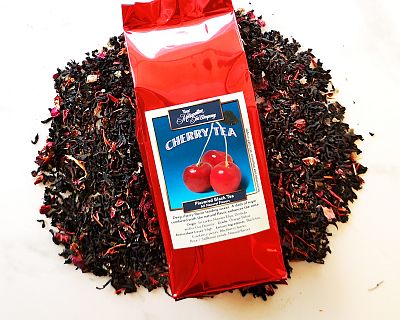
Cherry Tea
$11.99 View Product
Chocolate Mint Tea
$11.99 View Product
Cranberry Apple Tea
$11.99 View Product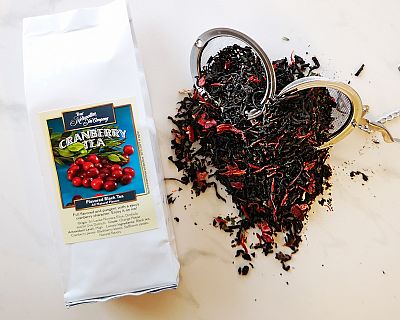
Cranberry Tea
$11.99 View Product
Creme de la Earl Grey Tea
$11.99 View Product
Earl Grey Rooibos Tea
$11.99 View Product
Earl Grey Tea
$11.99 View Product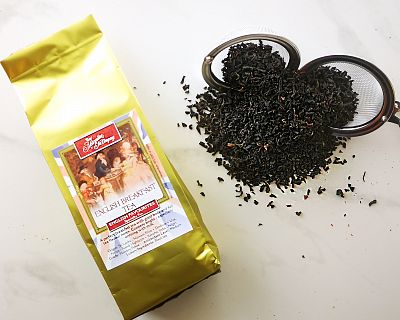
English Breakfast Tea
$11.99 View Product
Ginger Peach Tea
$11.99 View Product
Hazelnut Vanilla Tea
$11.99 View Product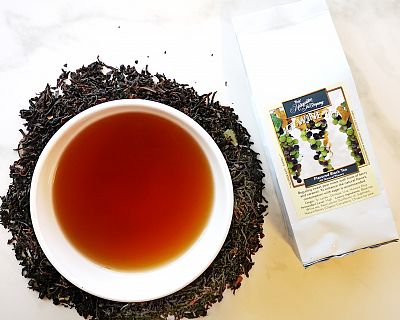
Ice Wine Tea
$11.99 View Product
Japan Sencha Green Tea
$11.99 View Product
Kama Sutra Chai Tea
$11.99 View Product
Lavender Tea (75 g)
$16.99 View Product
Lemon Green Tea
$11.99 View Product
Lemon Mango Punch Tea
$11.99 View Product
Mango Mist Tea
$11.99 View Product
Maple Blueberry Tea
$11.99 View Product
Maple Cream Tea
$11.99 View Product
Monk's Blend Tea
$11.99 View Product
Organic Tanzania Tea
$11.99 View Product
Peach Apricot Tea
$11.99 View Product
Peach Lift Tea
$11.99 View Product
Peppermint Tea (75 g)
$7.99 View Product
Queen Mary Tea
$11.99 View Product
Rhubarb Cream Tea
$11.99 View Product
Rooibos Provence Tea
$11.99 View Product
Rose Tea
$11.99 View Product
Royal Bengal Tiger Tea
$11.99 View Product
Scottish Breakfast Tea
$11.99 View Product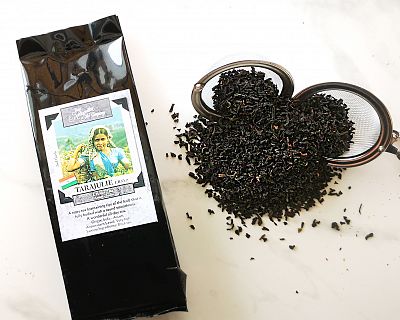
Tarajulie (Assam) Tea
$11.99 View Product


